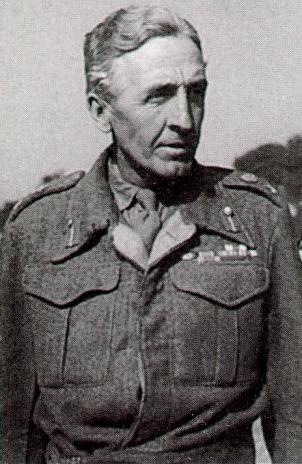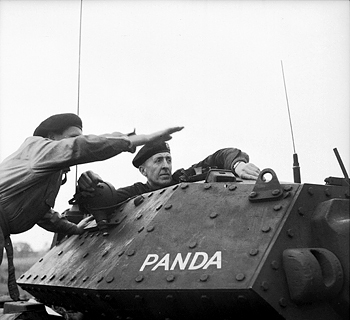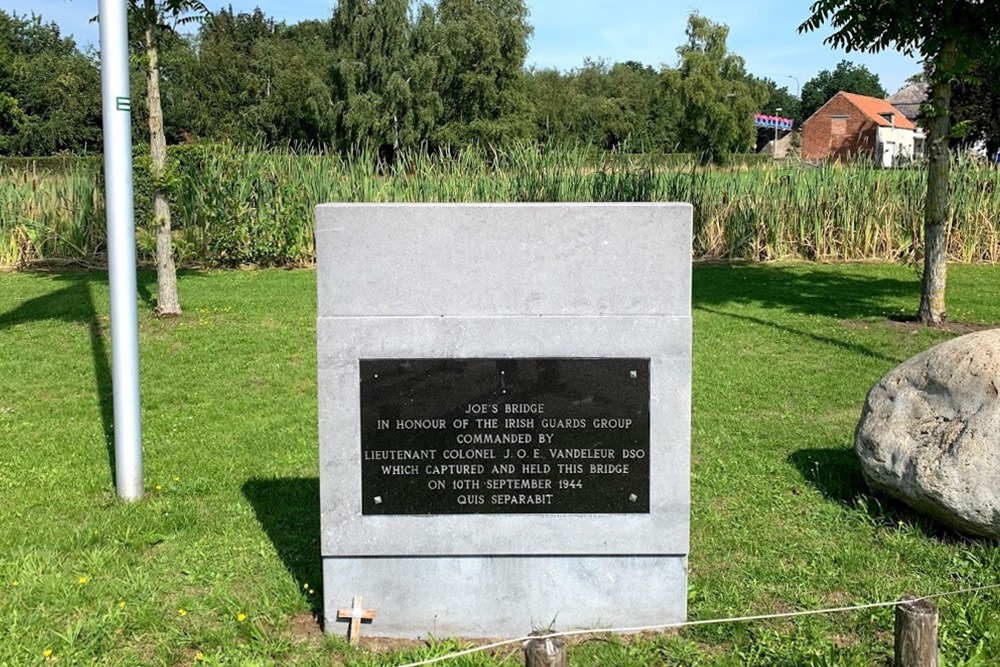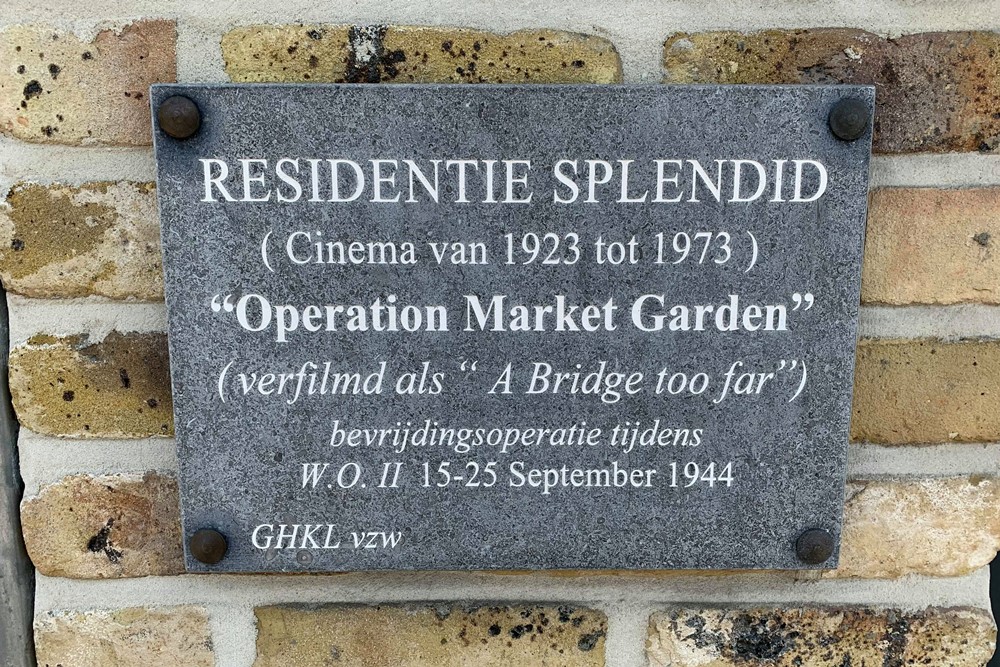Brian Horrocks was born September 7th , 1895 in Ranikhet, India. He was the son of Sir William Horrocks, a physician in the Royal Army Medical Corps. Brian went to boarding school in England and ended up in the Royal Military College in Sandhurst. He was not exactly a promising student and would not even be granted a commission, provided he did improve his records fast. In August 1914 he was posted to the Middlesex Regiment from Sandhurst. In October, he was injured near Ypre in Belgium and taken prisoner. Despite a few failed attempts at escape he remained in custody for the duration of the war.
When Horrocks had returned to England, he had trouble adapting and getting used to the peace situation. For a while he lived like a real playboy, incurring a lot of debts. Nonetheless, he soon found an opportunity to return to active service.
In April 1919, he turned up in Wladiwostok, a city on the Sea of Japan in the extreme east of Russia. As a member of a British mission, he fought in the Russian civil war in the White Army against the Bolshevists. He was awarded the MC but he was also imprisoned by the Red Army. During his 10 months imprisonment in horrendous circumstances he fell ill a few times. After his release, his health improved sufficiently and he decided, after he had been discharged from active service, to devote his time to the pentathlon. He won the British championship and represented his country at the 1924 Paris Olympic Summer Games.
In his 15 years as captain, the obligations to his regiment took him to places such as Germany (Silesia) and Wormwood Scrubbs. In 1927 he was named adjutant of the 9th Battalion Middlesex Regiment. Before he was appointed Brigade Major of the 5th Infantry Regiment at Aldershot, he took a course at Camberley Staff College from 1931 to 1932, after which he was taken up into the staff at the War Department. He returned to Camberley in 1938 to become member of the staff. He was to investigate how one should prepare for war and he held short courses for future staff officers of the Territorial Army.
When Germany launched her attack in the west, Horrocks was sent to France and was put in charge of the 2nd Battalion Middlesex Regiment, part of the 3rd Division commanded by General Bernard Montgomery. In July 1940, while still in France, Horrocks was promoted to Brigadeer and was put in command of the 11th Brigade. Horrocks had done well during the retreat of the British to Dunkirk but, more important to him, he had done so under supervision by two men who were to become the most powerful men in the British army during the war: Alan Brooke, in command of 11th Corps and Bernard Montgomery, commander of Horrocks’ division. It would take more than two years however before Horrocks would hear the next shot.
In January 1941, Horrocks was appointed Brigadeer on the General Staff Eastern Command and in June 1941 he was promoted to Major general and appointed commander of the 44th (Home Counties) Division. He was good at befriending his superiors. He was bright, cheerful and keen, he didn’t grumble, he did what he was told and never took an attitude, challenging the intellect of the other.
March 1942, Horrocks was given command of the newly established 9th Armored Division. Up to that moment, Horrocks had no experience in commanding tanks and the experience he gained would prove its merits in his next commission. In August 1942, Horrocks was called to North-Africa by Montgomery to take command of the British XIII Corps. When Horrocks arrived in North-Africa, he was tasked with setting up a defensive line on the Alem-Halfa Ridge in order to repulse the expected attack by the Afrika Korps. Part of his defensive plan was to have his tanks dug in around the ridge. When the Germans attacked, they were unable to deploy their 88mm guns against the British tanks and consequently they were plastered by the guns of the British 7th Armored Division and bombed and strafed by the Allied Desert Air Force. The aerial attacks, artillery barrages and a shortage of fuel prevented the Germans from improving their positions. On September 2nd 1942, it became clear to Erwin Rommel that the attack had failed. Demoralized, he ordered his units to make an organized withdrawal. Losses were considerable and Rommel learned his first hard lesson.
After the battle at Alem-Halfa, Horrocks was offered command of the British X Corps. He rejected the offer as he considered Major General Herbert Lumsden more suitable for the role X Corps had to play in the coming battle. Horrocks remained in command of XIII Corps. Montgomery instructed Horrocks though not to permit any more losses of tanks, diminishing the role of XIII Corps in the offensive plans to minor surprise attacks.
Once the fighting at El Alamein was over, Horrocks was appointed commander of the British X Corps. In Operation Pugilist in southern Tunisia, he launched one of his most successful attacks of the war. Montgomery had planned a two pronged assault on the Mareth line: a frontal assault on the line itself and a flanking attack, 186 miles to the south. The frontal assault soon bogged down, making Montgomery decide to reinforce the units advancing south. Lieutenant general Horrocks and his X Corps, including the 1st Armored Division, were sent to the Matmata Hills to reinforce the New Zealand 2nd Division commanded by Lieutenant general Bernard C. Freyberg. Information provided by the Long Range Desert Group told Montgomery the line could be breached there. March 27th, the Allies broke through the Tebago Gap, making the line untenable and forcing the Axis powers to abandon it. A left hook was now made. The Axis forces commanded by Italian general Giovanni Messe could only escape encirclement as X Corps was delayed at El Hamma. Finally they retreated 37 miles to the north.
In the last stages of the war in Tunisia, Horrocks let himself be named commander of the British XI Corps of the British 1st Army commanded by Lieutenant general Sir Kenneth Anderson. In June 1943, Horrocks was gravely injured near Bizerta when he was suddenly hit by a shell from a lone German airplane.
In September 1943, Horrocks and the American lieutenant general Omar Bradley flew back to England. There the doctors told him he would never again lead his men in battle. He found some consolation in his appointment to Companion in the Order of the Bath (C.B.) and being awarded the D.S.O. As it was, it would take a year until he was given a command again. Being one of Montgomery’s favorites, at the end of August 1944 he was designated to replace Lieutenant general Gerard Corfield Bucknall of the British XXX Corps who had fallen from grace. He commanded XXX Corps in the fighting in the Falaise pocket where the Allies defeated the German 7th Army. Horrocks remained in command of the corps during the drive through Belgium. He liberated Brussels and at some moment he had advanced 248 miles in just six days. Horrocks drive was interrupted when he was ordered to capture the port of Antwerp. A decision he regretted after the war as it gave the Germans time to regroup. Antwerp was of vital importance to the Allies as all other deep water ports on the French coast remained in German hands until May 1945 and the supply lines stretched all the way back to Normandy. In September 1944, without anyone being aware of it, XXX Corps faced one single German division but by the time it was ready for the attack north, the Germans had deployed 1.Fallschirmarmee commanded by Generaloberst Kurt Student.
In mid September, British XXX Corps was directed east and the Canadian 1st Army was ordered to clear the German defensives on both banks of the River Scheldt from Antwerp to the North Sea. Meanwhile, Montgomery concocted Operation Market which was to be the most important task for his British 21st Army Group. XXX Corps commanded by Brian Horrocks was to play the leading role in the assault on the ground. Operation Garden was aimed at relieving the British 1st Airborne Division in Arnhem who were told in turn that contact with XXX Corps would be established within two days. When the attack began, Heeresgruppe B commanded by Generalfeldmarschall Walter Model launched a series of counter attacks, forcing Horrocks’ units into a defensive role. The terrain Horrocks’ men had to negotiate was not suitable for their mission either. Entire divisions were often restricted in their advance by unsuitable terrain and had to make progress along one elevated two lane roadway (Hell’s Highway). In the end, Horrocks failed in his ground attack and failed to make contact with the beleaguered 1st Airborne in Arnhem. He was not made responsible personally however for the failure of his corps.
At the end of 1944, Horrocks was sent home on compulsory sick leave. In March however, he was back again and guided his XXX Corps across the River Rhine. From there, they struck deeper into Germany, capturing Bremen and were faced with the atrocities of concentration camp Sandbostel.
In 1945, Horrocks was knighted and he remained in the army. From 1946 to 1948 he was General Officer Commanding Western Command and from 1948 to 1949 General Officer Commanding-in-Chief British Army of he Rhine. In 1949, he was declared medically unfit for the army owing to his bad health as a result of his injuries he had contracted in Africa. After his discharge, he was named Gentleman Usher of the Black Rod, a function in the British House of Commons and he was director of a building company from 1963 to 1977. In the 60s, he made a successful career hosting a number of television series on military history. Horrocks followed up his success by publishing a number of books on the history of various regiments in the British army. During the last years of his life, he remained active in his charity work and in 1979 he suffered a severe blow when his daughter and only child drowned in the River Thames while swimming.
Sir Brian Gwynne Horrocks, KCB, KBE, DSO, MC passed away January 4, 1985.
Images
Information
- Article by:
- Kees Jan Koster
- Translated by:
- Arnold Palthe
- Published on:
- 19-01-2025
- Feedback?
- Send it!
- 05-'45: In the Wake of the Victors


















